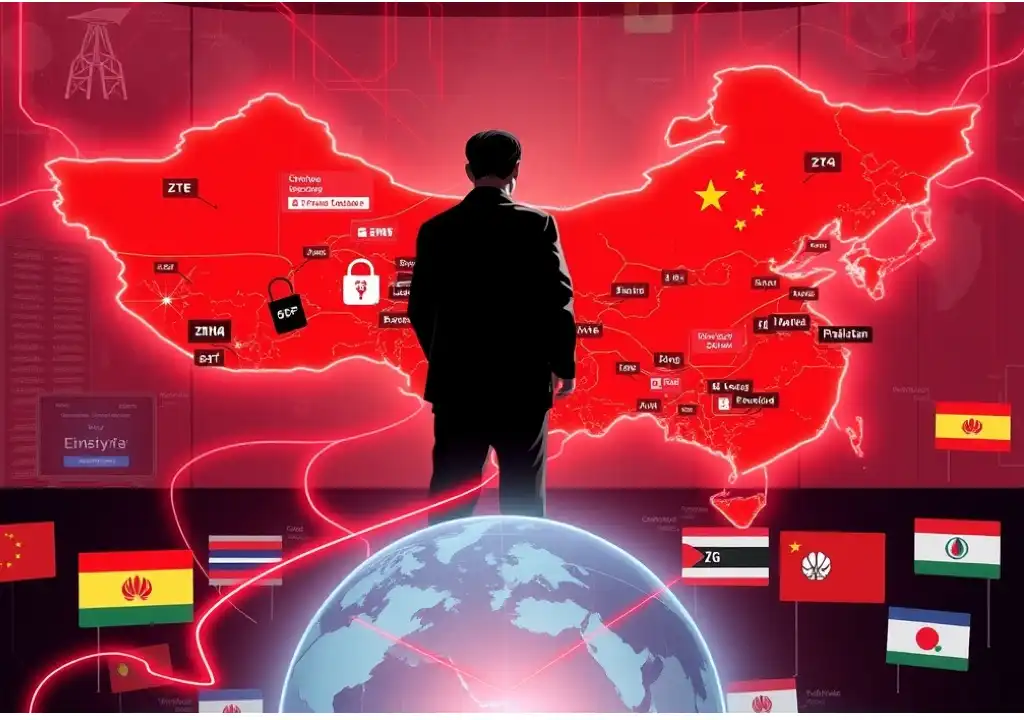Rights Watchdog Warns of Surveillance-Driven Digital Silk Road
China is actively spreading its model of digital authoritarianism by leveraging its growing tech industry and vast infrastructure initiatives, offering a “blueprint” of governance to countries such as Cambodia, Malaysia, and Vietnam, a UK-based human rights group has reported.
In 2015, following the launch of its Belt and Road Initiative (BRI), China introduced the “Digital Silk Road” to expand digital infrastructure globally, including satellite systems, 5G networks, and undersea cables.
According to Article 19, the human rights watchdog behind the April report, this project is about far more than enhancing internet access or digital commerce. The group contends that the Digital Silk Road aims to reshape global internet norms by steering them away from a free and open internet toward a fragmented, state-controlled digital environment that enables censorship and surveillance—particularly benefiting China and like-minded authoritarian regimes.
China’s Tech Giants Tied to State Ambitions
The report emphasizes how Chinese technology firms such as Huawei, ZTE, and Alibaba, though officially private, act as proxies for the Chinese Communist Party. These firms play a central role in exporting China’s internet governance model under the guise of infrastructure development.
So far, China has signed dozens of digital technical agreements with 49 countries in the Belt and Road Initiative. Other nations—including Cambodia, Indonesia, Myanmar, Malaysia, Nepal, Pakistan, and Thailand—have further aligned themselves with Beijing on digital matters.
Article 19 notes the Asia Pacific region’s particular importance for China, due to its strategic role in China’s ambitions to internationalize its surveillance-based digital framework and normalize authoritarian internet practices globally.
Southeast Asia Emulating China’s Internet Controls
Cambodia, for example, has begun implementing a “National Internet Gateway” that mirrors China’s infamous “Great Firewall.” This system restricts access to Western news outlets, Wikipedia, and popular social media platforms like Facebook and X.
While Cambodian officials argue the system will enhance security and fight tax evasion, the Internet Society has warned that it could disrupt connectivity and suppress free expression, with broader implications for the global internet when international users connect to Cambodian networks.
Countries like Nepal and Thailand are reportedly exploring similar measures, while also assisting China in monitoring ethnic minorities such as Tibetans and Uighurs abroad, according to Article 19.
State-Private Sector Fusion Raising Global Concerns
Under President Xi Jinping, the boundary between the Chinese state and the Communist Party has eroded, with party influence embedded in over 90 percent of China’s top 500 firms. Many of these firms are enlisted in China’s “united front” campaigns to enhance its international image and extend its reach globally.
This integration raises major concerns about the independence of Chinese tech companies, particularly when handling sensitive issues like data privacy and online freedom outside of China. These fears have intensified calls in the United States to ban TikTok through legislation such as the Protecting Americans from Foreign Adversary Controlled Applications Act, which claims the app could expose U.S. data to the Chinese state and influence American users.
Security apprehensions have also affected Chinese firms like Huawei and ZTE in democracies such as Australia, Canada, Japan, the UK, and New Zealand. In the U.S., both companies have been labeled national security threats and excluded from vital infrastructure projects.
Global Internet Infrastructure at Stake
China’s involvement in undersea cable projects gives it significant control over global data routes, prompting questions about how these tech firms—operating under close state scrutiny—might manage sensitive data or enforce censorship in international markets.

